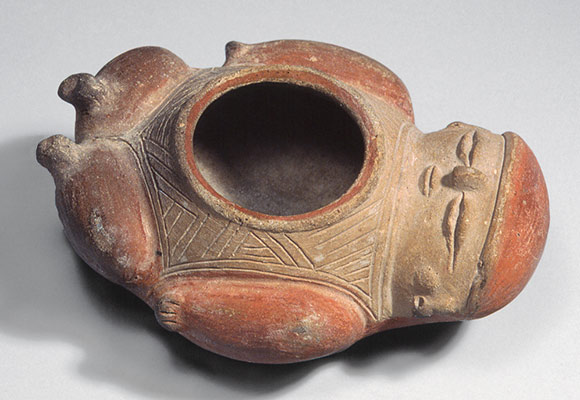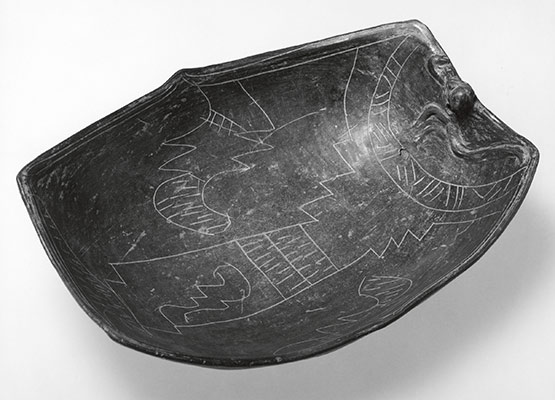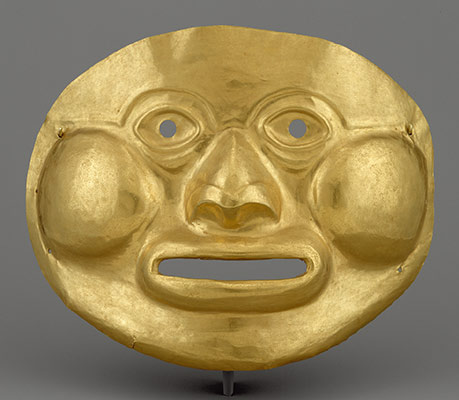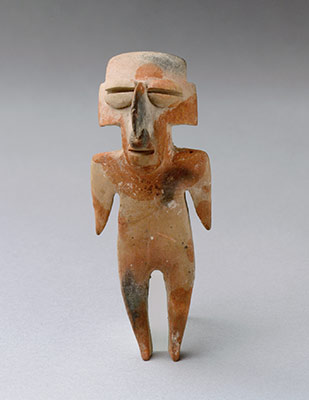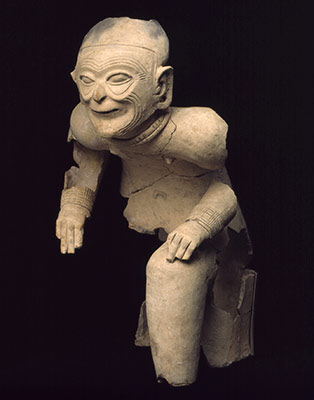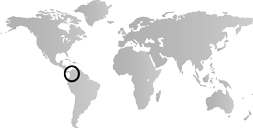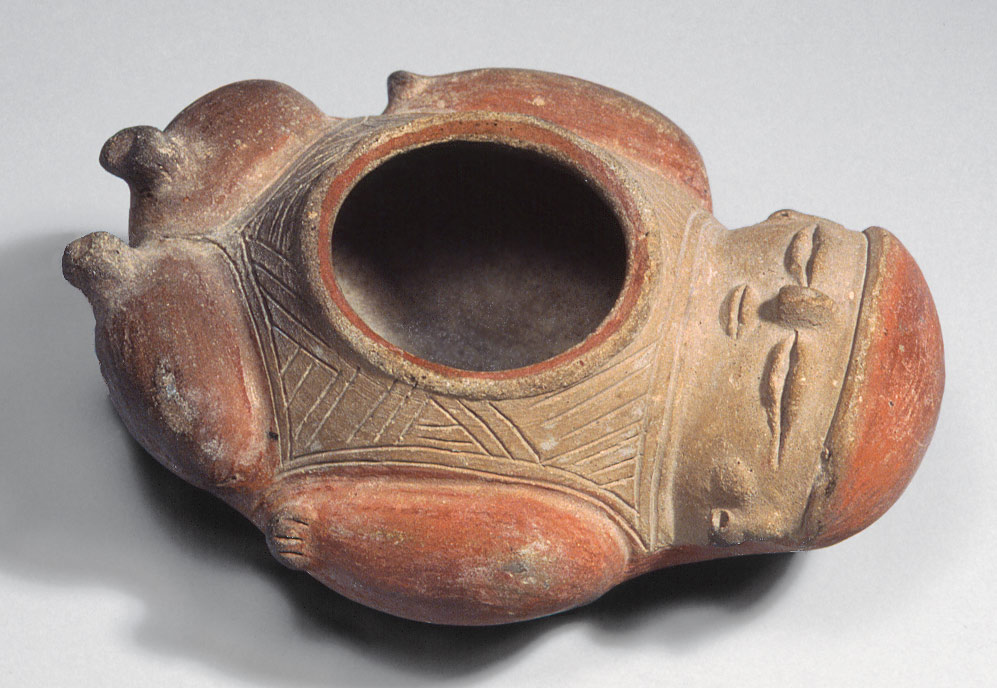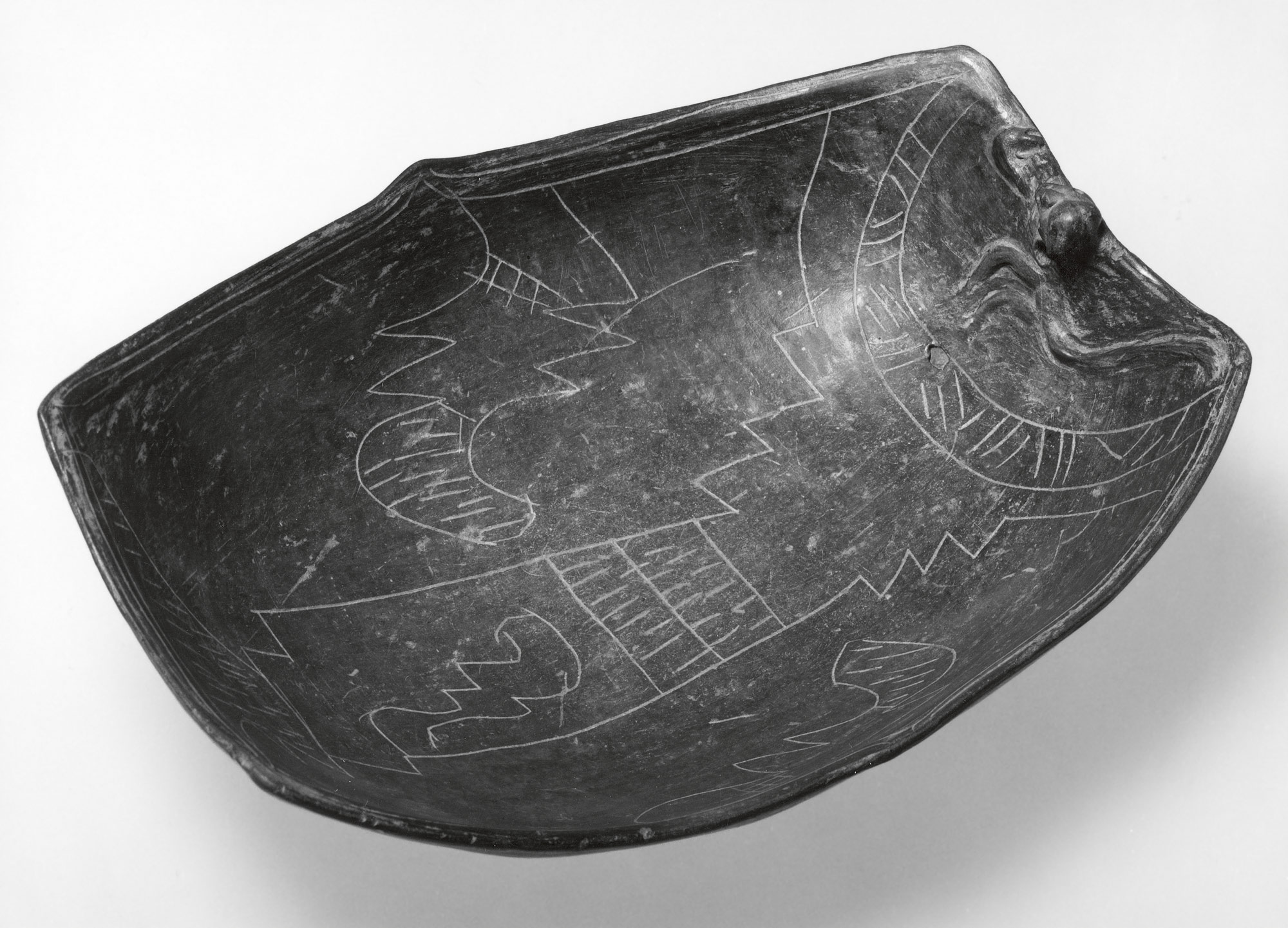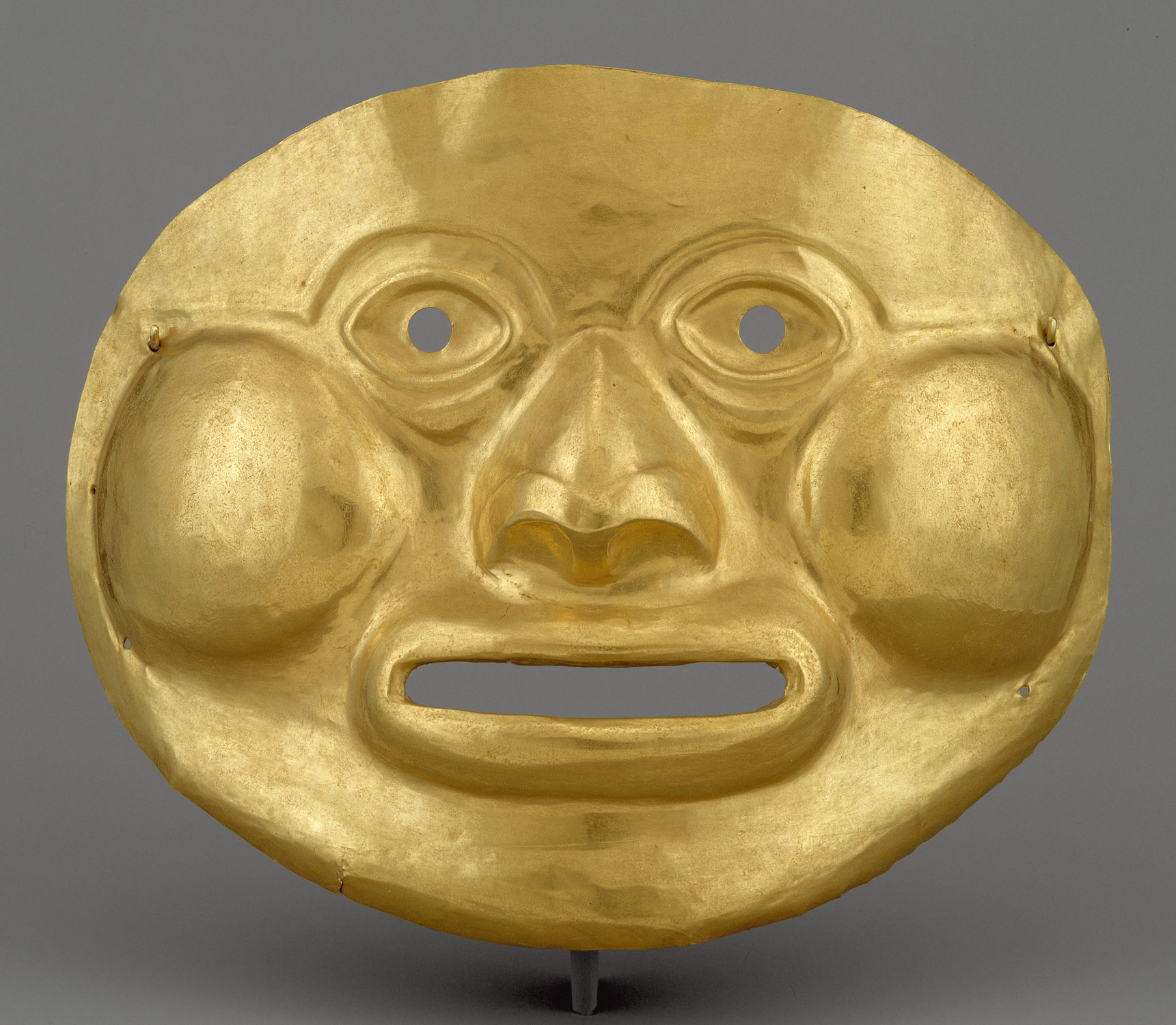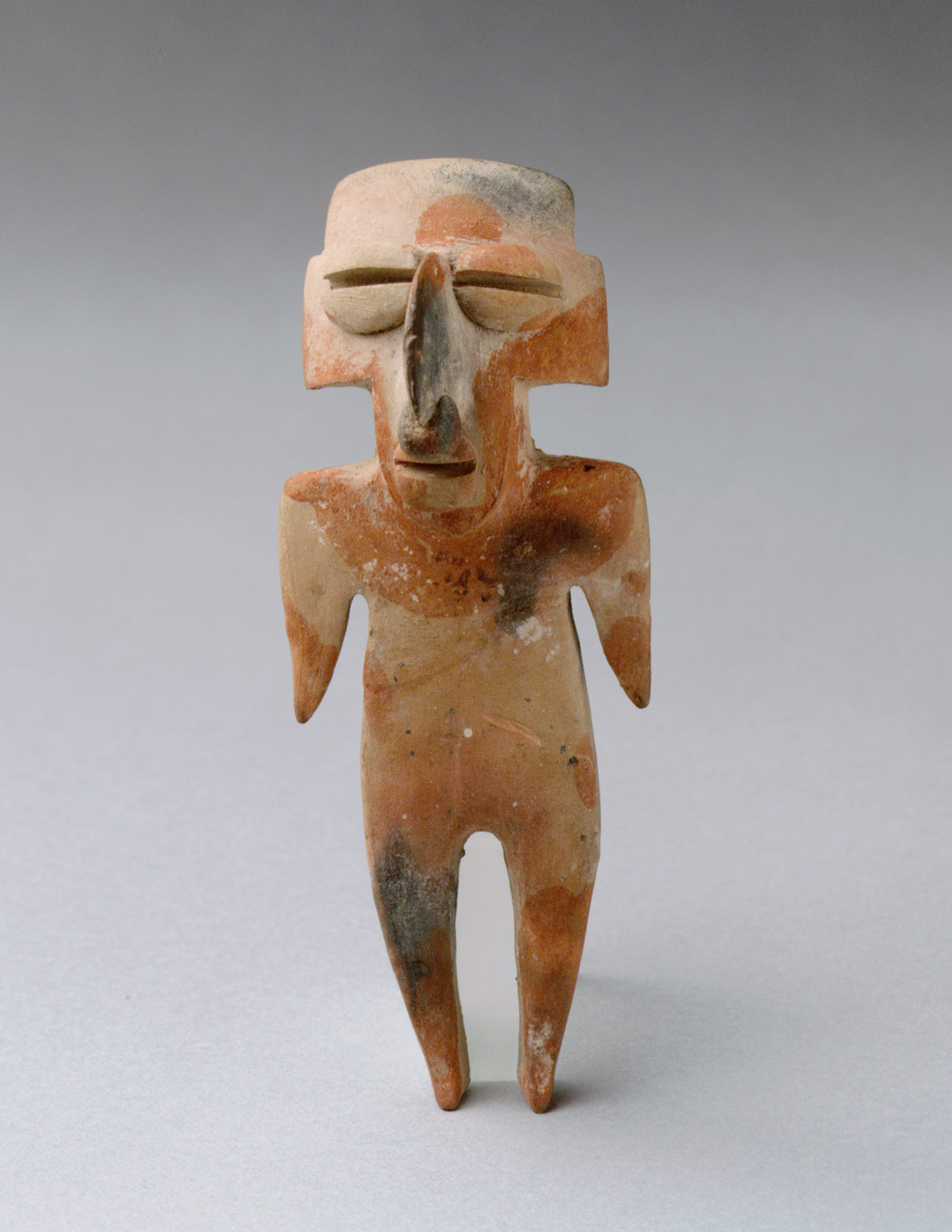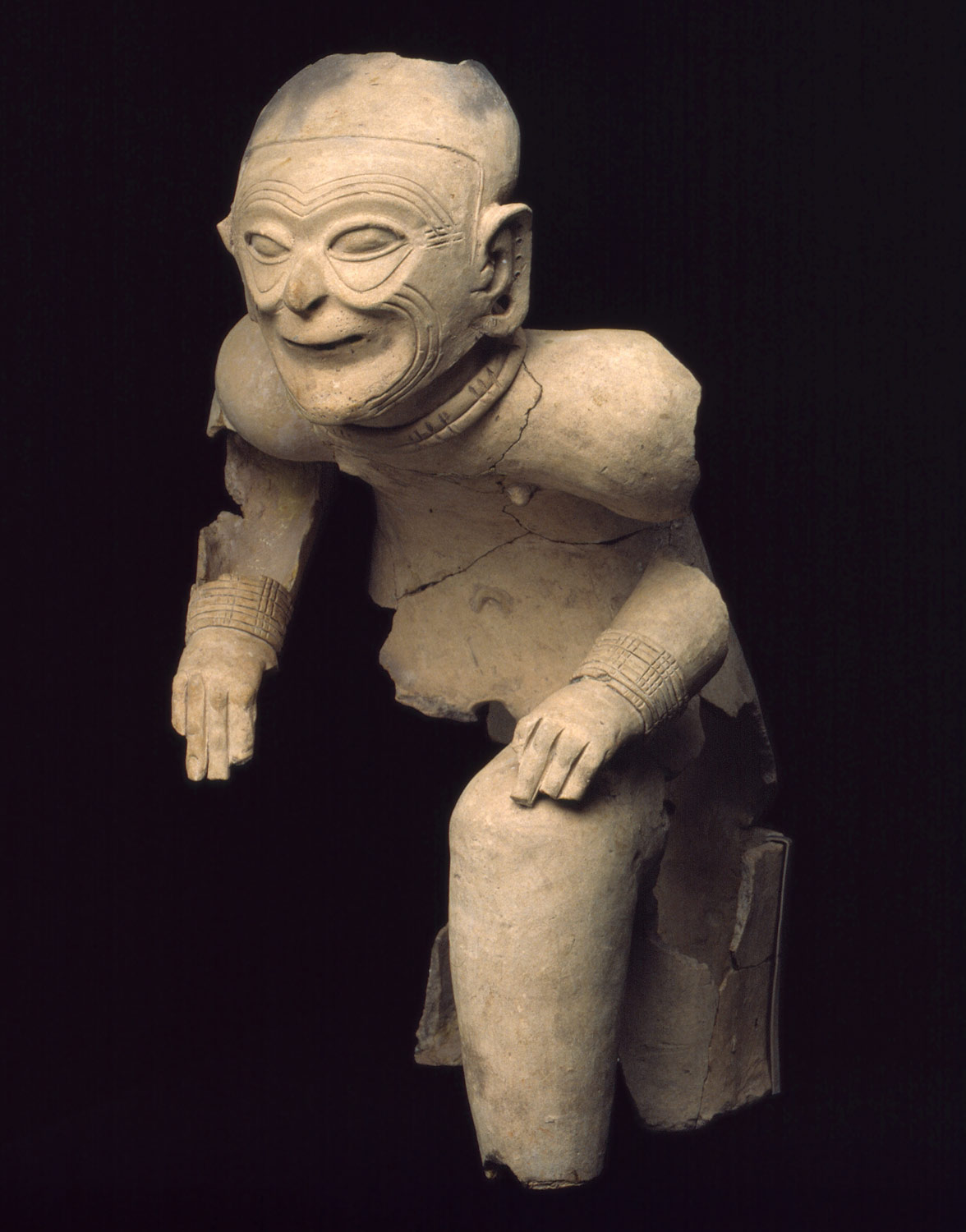Permanently settled villages, primarily along the Ecuadorian coast and in the northern lowlands of Colombia, grow in number and size. Cultivation of maize, probably introduced from Mesoamerica, is established. Coastal villages in Ecuador trade products such as spondylus shell for obsidian (volcanic glass used for tools) and other materials with highland communities and areas to the south.
In the second half of the period, group differentiation begins; territorial boundaries are established and communities develop unique traits based on environment and population. Hierarchic social structure with complex class and status distinctions evolves regionally. Significant technological advances are made in ceramics and metallurgy. New vessel forms and decorative techniques develop. Toward the end of the period, metallurgy, using gold and copper, is practiced in northern coastal Ecuador and southwestern Colombia; impressive ornaments for the elite are made in a variety of sophisticated techniques.
